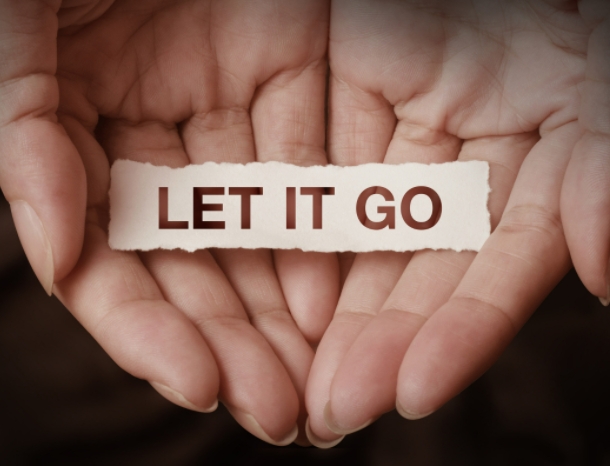- Call us
813-751-6429

In life, we all face challenges and hardships that can leave lasting scars on our hearts and minds. Whether it’s the pain of a past relationship, the loss of a loved one, or the trauma of abuse, these experiences can weigh heavily on us and hinder our ability to live fully in the present. However, learning the art of letting go of past trauma is essential for healing and moving forward with resilience.
In this article, I’ll explore the importance of acknowledging and processing past trauma, techniques for letting go of emotional pain, and strategies for building resilience and finding peace.
Acknowledging and Processing Past Trauma

Acknowledging the existence of past trauma is often the crucial first step towards healing. It’s common for individuals to attempt to suppress or avoid painful memories, believing that ignoring them will facilitate moving forward. However, this avoidance strategy typically only prolongs the emotional distress. To truly begin the healing journey, one must confront these past traumas directly and allow themselves to experience the full spectrum of associated emotions.
Engaging in the process of processing past trauma requires a willingness to engage in self-reflection, seek therapy, or participate in support groups where individuals can safely explore their feelings and experiences. Through these avenues, individuals can find a supportive environment where they feel understood and validated. Sharing one’s story with others who can empathize and provide support can be instrumental in making sense of past experiences and initiating the healing journey by letting go.
Techniques for Releasing Emotional Pain

Now, once we’ve acknowledged our past trauma, it’s crucial to actively seek out healthy ways to release the emotional pain it has caused. Here are some practical examples of what you can do:
Mindfulness and Meditation: Set aside time each day to practice mindfulness and meditation. These practices can help quiet the mind, bring awareness to the present moment, and cultivate a sense of inner peace. Try guided meditation apps or attend mindfulness workshops to deepen your practice.
Journaling: Start a journaling practice to explore your thoughts, feelings, and experiences related to past trauma. Write freely without judgment, allowing yourself to express whatever comes to mind. Writing can be a therapeutic outlet for processing emotions and gaining clarity on your journey towards healing.
Physical Activities: Engage in physical activities that help release pent-up energy and tension stored in the body. This could include activities like golf, running, hiking, cycling, swimming, or practicing yoga. Moving your body can help you connect with your physical sensations and release emotional stress.
Creative Outlets: Explore creative outlets such as art, music, or writing to express your emotions and transform your pain into something beautiful. Experiment with different mediums and techniques to find what resonates with you. Whether it’s painting, playing an instrument, or writing poetry, allow yourself to tap into your creative side as a means of self-expression and healing.
By incorporating these practices into your daily life, you can begin to release the emotional pain of past trauma and cultivate a sense of healing and resilience. Remember to be patient and compassionate with yourself as you embark on this journey towards letting go and inner peace.
Strategies for Building Resilience and Finding Peace

Building resilience is a profound journey of inner transformation, where we develop the strength and resourcefulness needed to navigate life’s challenges with grace and courage. It’s about cultivating a mindset that sees obstacles as opportunities for growth and transformation rather than insurmountable barriers.
So, in order to build resilience, we must first cultivate a positive mindset. This involves reframing negative thoughts and beliefs, focusing on gratitude and optimism, and practicing self-compassion in times of difficulty. By nurturing a mindset of resilience, we can approach challenges with a sense of hope and determination, knowing that we have the inner resources to overcome them.
Self-care is another essential aspect of resilience-building. This means prioritizing our physical, emotional, and mental well-being by engaging in activities that nourish and replenish us. Whether it’s getting enough sleep, eating nutritious food, exercising regularly, or engaging in activities that bring us joy and relaxation, self-care is crucial for maintaining resilience in the face of adversity.
Additionally, fostering supportive relationships with others is vital for building resilience. Surrounding ourselves with people who uplift, encourage, and support us can provide invaluable emotional support during difficult times. These relationships can serve as a source of strength and resilience, helping us navigate life’s challenges with greater ease and confidence.
Ultimately, building resilience is about embracing the journey of personal growth and transformation that comes with overcoming adversity. It’s about recognizing that setbacks and hardships are an inherent part of life, but they don’t have to define us. By focusing on what we can control, practicing self-compassion, and nurturing supportive relationships, we empower ourselves to overcome adversity and thrive in the face of life’s challenges.
Finding peace after trauma is a deeply personal and transformative journey that requires patience, self-compassion, and a commitment to personal growth. It’s about embracing our experiences—both the joys and the sorrows—as integral parts of our journey and allowing ourselves to be fully present with whatever arises.
Forgiveness is a powerful tool in the journey towards peace after trauma. It’s about letting go of the grip of resentment and anger, not for the sake of the person who harmed us, but for our own healing and liberation. By forgiving ourselves and others, we free ourselves from the burden of carrying past hurts and open ourselves to the possibility of healing and growth.

Gratitude is another essential aspect of finding peace after trauma. It’s about shifting our focus from what we’ve lost to what we still have, from what’s gone wrong to what’s still right. Cultivating a practice of gratitude can help us find beauty and meaning in the midst of pain and suffering, allowing us to experience moments of joy and connection even in the darkest of times.

Finally, finding peace after trauma requires a willingness to let go of the past and embrace the present moment. It’s about releasing the need to control or change what has already happened and instead focusing on what we can do right now to create a better future for ourselves. By surrendering to the flow of life and embracing each moment with acceptance and openness, we can find peace and contentment in the midst of life’s challenges.

Here’s the bottom line…
The art of letting go of past trauma is a transformative journey of healing and self-discovery. By acknowledging our pain, releasing emotional baggage, and building resilience, we can move forward with courage and confidence, knowing that our past does not define us.
If you’re ready to take the first step towards healing and letting go, I’m here to support you. As a special offer, I’m providing a free 20-minute coaching session, valued at $175, to help you on your journey. During this session, we’ll explore practical strategies and techniques to help you release past trauma and cultivate resilience so you can succeed in all areas of your life.
Click Here To Schedule Your FREE 20 min. Coaching Session
With patience and perseverance, you can find peace, healing, and joy in the present moment. Take the first step towards a brighter future by scheduling your free coaching session today.
#LettingGo #TraumaHealing #ResilienceBuilding #EmotionalWellness #SelfDiscovery #InnerPeace
Stay ahead in a rapidly world. Subscribe to Prysm Insights,our monthly look at the critical issues facing global business.



